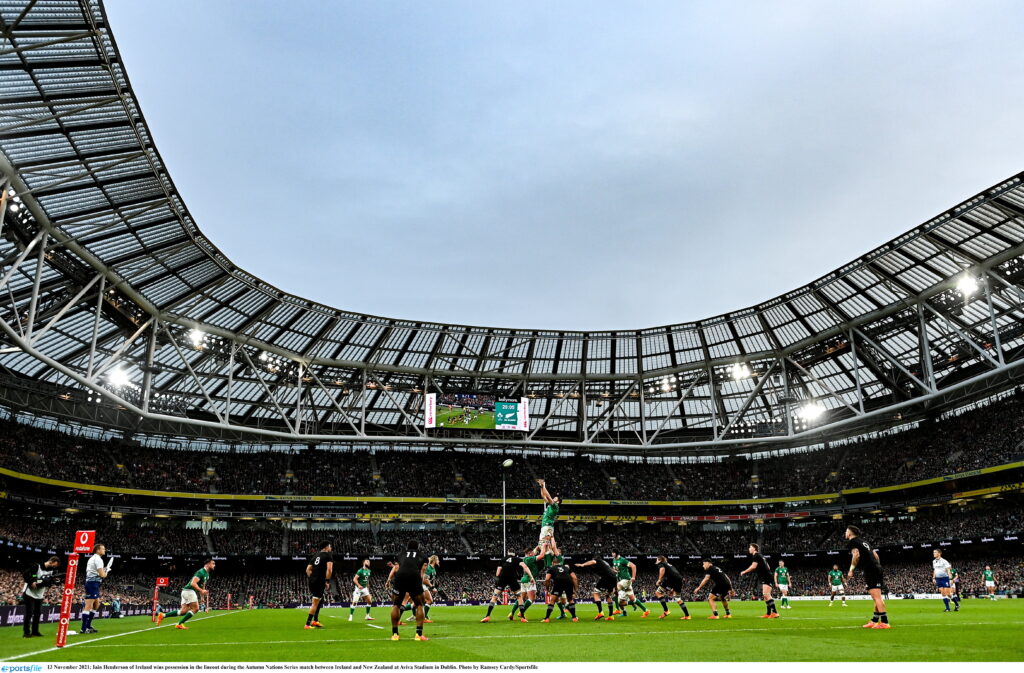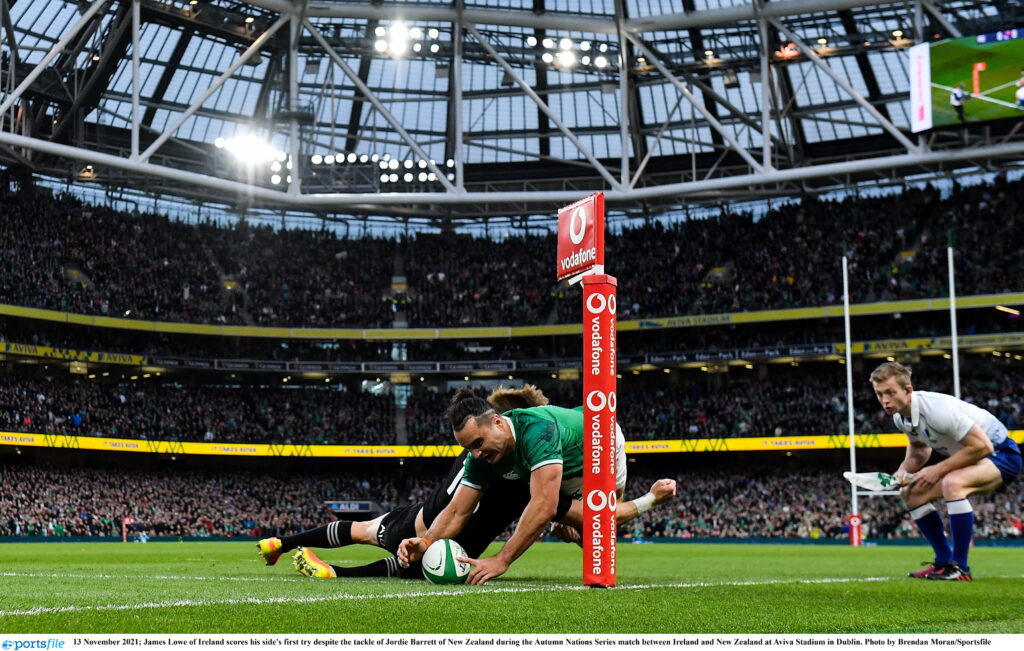
ANDY Farrell’s Ireland side are now unbeaten in their last two fixtures against the All Blacks in the Aviva and unbeaten in their last seven test matches.
Ireland cruise to third in the World Rugby rankings as their 29-20 win over the All Blacks puts them just behind the Kiwi’s at second and the world champion Springboks in first. After Ireland’s early exit from the 2019 World Cup, a win over the All Blacks once again appeared like an impossible feat.
Yet after Andy Farrell’s appointment in late 2019, Ireland began to come out of their shell in the thick of the 2020 Six Nations and emerged as a dynamic attack orientated team, moving on from Schmidt’s ‘risk free’ approach.
However this win over the All Blacks is now proof not only of Farrell’s capabilities as a coach, but of his players ability to adapt a new philosophy and use it to beat the best. So how did Farrell and his men do it?

A game plan less reliant on Johnny Sexton
For years under prior Irish head coaches such as Declan Kidney and Schmidt, wherever Sexton was, that’s where the ball was going. Of course this is an over simplification of an otherwise more complex attacking strategy, but no matter what tricks these Irish coaches had up their sleeves, Sexton was likely to be at the centre of it.
Sexton usually could play his way around the mounting pressure piled on by his opponents but now that Sexton is older, his role has developed to become more of a game manager, behind the scenes rather than a frontman.
Ireland attack coach Mike Catt has re-shuffled Ireland’s attack into a shape which the Japanese made famous. The 1-3-2-2 shape has worked very well for Ireland, creating scenarios where defending players are forced to make decisions on who to cover and giving Ireland the luxury of attacking wherever the space may appear.
Many of Ireland’s set pieces on Saturday, either off line-outs or scrums, weren’t orchestrated by Sexton. Many times you’d see full-back Hugo Keenan or scrum-half Jameson Gibson-Park standing in a first receiver and in turn having the responsibility of moving the ball to where it needed to be in order to best exploit the All Blacks defence, a role Sexton has had since making his debut in 2009.
Now that Ireland can create other threats outside of the man wearing 10, their attacking philosophy will undoubtedly evolve further ahead of the 2022 Six Nations.
Ireland starve the All Blacks, again
The match statistics from Irelands win over the All Blacks are actually quite astounding. Ireland had 60% of the possession and 65% of the territory throughout the game’s 80 minutes. That is a level of control rarely seen in an international test match but to achieve it against the All Blacks is simply unheard of.
Ireland almost doubled the All Blacks’ number of carries, with 82 carries dwarfing New Zealand’s 44. But perhaps what’s most impressive is Ireland’s number of passes within their 60% possession, defining Ireland’s newfound approach to attack. Ireland tosses a whopping 212 passes while New Zealand only threw 106, with every member of the starting 15 passing more than once.
Ireland made 16 visits to the New Zealand 22, but left empty handed on 12 of them. despite how it may appear, this isn’t a bad statistic from an Irish perspective. Yes, anytime a team visits their opposition 22 their desired outcome is a number of points in some shape or form, and only capitalising on four out of 16 visits does seem like a bit of a waste of effort.
However being in the opposition 22 with possession puts your opponent at a massive disadvantage, not only because they’re constantly defending a shallow patch of space, but because it can be difficult to launch a counter attack with so much of the pitch to travel if possession is regathered.

O’Connell’s impact felt on the field
The Paul O’Connell coached pack also had a lot to boast about after the game on Saturday, winning 80% of their scrums on their own feed (4). Although the All Blacks did better Ireland by 8% when it came to scrum time, it appeared to be an aspect of Ireland’s game which they were happy to concede in.
Ireland won just one more line out than New Zealand, with an 82% success rate in comparison to the Kiwi’s 80%. The breakdown was another positive aspect of Ireland’s performance, winning 97% of their rucks and forcing 13 turnovers.
However there are aspects that O’Connell won’t forgive his forwards for. Not only were New Zealand far more dominant in the scrums, but Ireland only maintained a 67% while the All Blacks completed 85% of their tackles.
With O’Connell at the helm, expect those mistakes to be rectified sharpish.
The All Blacks won’t have to wait long before they get a shot at redemption against the Irish, with Andy Farrell’s men traveling to New Zealand this coming summer to play a three game test series in Eden Park.
But before Irish fans get excited for their next southern hemisphere clash, Ireland will have to face Argentina in their final fixture of the 2021 Autumn Nations Series on Sunday November 21st at the Aviva Stadium, with kick-off at 2:15pm.
The post TALKING POINTS | Ireland dismantle the All Blacks for the second time in three games appeared first on Sporting Limerick.










